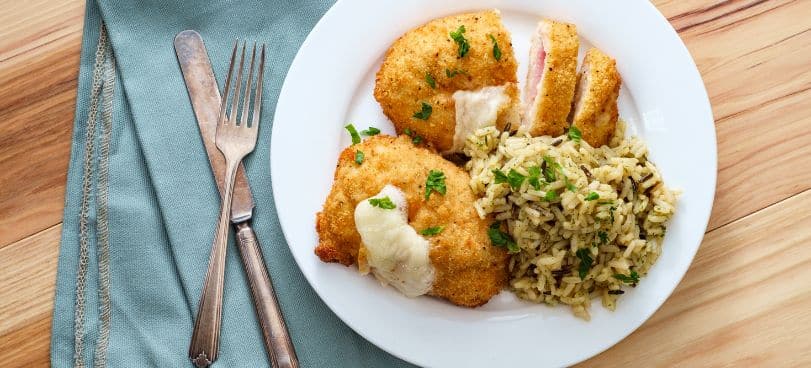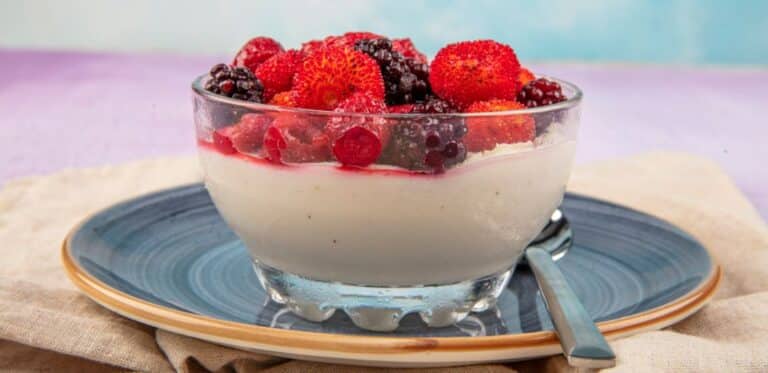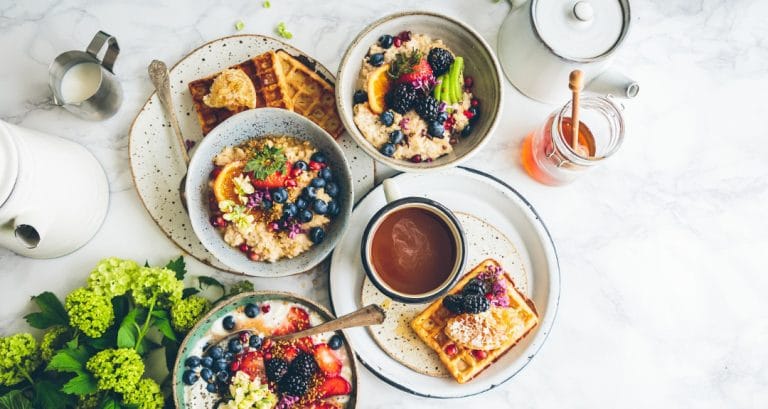Eat More Protein To Boost Weight Loss
Are you getting enough protein each day? Protein is crucial for your body’s health and helps suppress appetite and keep you feeling full.
However, many people still aren’t getting as much as they need. Here we explain how to incorporate more protein into your diet and boost weight loss.
Why Is Protein Important For Weight Loss?
Protein is needed to support the functions of your body, including metabolism, muscle growth, and repair.
Your body needs protein to burn fat and build muscle, meaning a faster metabolism, lower body fat percentage, and higher lean muscle mass, i.e., a more toned you!
Protein also keeps you feeling full for longer, helping to keep cravings at bay. In addition, protein boosts your immune system, lifts your mood, and helps strengthen your hair.
How Much Protein Do I Need?
Government guidelines say that women need around 46g per day and men need 56g per day.
However, it depends on how much you weigh. The Dietary Reference Intakes (DRI) states that individuals over 19 need 0.36g of protein per pound of body weight each day.
So these average amounts are for a woman weighing around 130lbs and a man weighing 155lbs. By comparison, an individual weighing 200lbs should be eating at least 80g of protein each day.
However, this is just enough to meet the functions of your body and prevent nutritional deficiency.
If you’re regularly lifting weights to build muscle then you need more protein than this. Around 0.6g of protein per pound of body weight per day should ensure that you gain muscle and lose fat if you do a lot of weight-bearing exercises.
Meaning that a 200lb person who lifts weights regularly needs closer to 120g of protein per day.
Speak to your doctor or a nutritionist if you need further clarification on how much protein you need each day.
How Do I Get More Protein In My Diet?
The first step is to track how much protein you eat over two or three days.
This will give you a good idea of the quantity of protein you generally eat. Then, from this ‘natural baseline,’ you will see how close you are to your target and where you need to improve.
So, just as you would track calories, note what you’ve eaten and how much protein each item contains. Most foods have protein listed on the nutritional information.
And then, with foods such as meat, fruit, and vegetables, you can find protein content online or using an app like My Fitness Pal. However, it’s best not to rely on My Fitness Pal for everything, as you may not find the exact brand.
Once you know how much protein you usually eat, you can alter your diet to ensure you meet your protein targets.
The easiest way to then do this is to take each meal or snack at a time to see how you could add more protein throughout the day.
This can be done by making switches, being sure to eat protein-rich snacks, and varying protein sources to avoid boredom.
5 Ways To Eat More Protein
If we take the example of a person weighing 200lbs again, their minimum protein intake should be 80g per day.
Within the typical three meals and two snacks per day, this person should eat around 15-20g of protein each time they eat. But how can you eat more protein to ensure you’re still losing weight?
Here are five ways to do just that:
1. Vary Protein Sources
While it’s true that meat is a great source of protein, red meat can be high in calories and saturated fat. Chicken and fish are great options, but you might not want to have them daily.
Switch meat for beans and legumes like chickpeas and lentils in dishes like burgers, stews, and pasta dishes.
Dairy is another great source of protein, so stock up on low-fat cheese, yogurt, and milk. And, when it comes to breakfast, eggs are always a good option and pack in around 8 grams of protein each.
2. Sides Count Too

Often we think of a meal’s protein source as being the meat, fish, or eggs.
However, it’s possible to get a big portion of your daily protein needs from side dishes. Quinoa is a real winner as it’s a complete protein, much like animal protein.
For this reason, it’s very popular with vegans and vegetarians who may struggle to get enough protein in their diets. Although it’s technically a seed, it has a consistency more like couscous, so it’s perfect in salads and with stir-fries for added protein.
Other grains like brown rice and whole grain pasta contain protein too, and don’t forget the protein in your morning cereal!
Then there are beans and legumes, which can be added to pasta, stews, soups, and salads for more protein. Fruit and veggies can also provide protein.
In fact, research shows that at least 14% of the calories of all vegetables is protein, and broccoli contains more protein per calorie than steak.
Of course, it would be difficult to eat that much broccoli, but it’s good to know that low-calorie foods like veggies count too!
3. Protein-Power Up Your Snacks
If your typical snacks don’t contain protein, then make sure they do! These top ten of protein snacks show protein sources with the fewest calories in the form of tuna, hard-boiled eggs, nuts, and seeds.
So, upgrade your mid-morning piece of fruit with a 6oz low-fat unsweetened Greek yogurt and 1oz of cashews, and you’ve got yourself 22g of protein.
Or, top wholegrain crackers with a 3oz tin of tuna, and that’s 21g of protein right there.
If you’re not getting at least 5-10g of protein when you snack then that means you’re unlikely to reach your daily target. Or that you’ll have to eat a lot of protein when it comes to one of your daily meals.
Even if you’re not particularly hungry, a glass of nonfat milk gives you 8g of protein per 8oz. Or, if you don’t do dairy, then unsweetened soy milk has 7g of protein per 8oz.
4. Dips, Spreads & Toppings
Why not whip up some homemade hummus for some serious protein power? Hummus is great in sandwiches, burgers, and wraps as a sauce and packs in plenty of protein and fiber.
Or, of course, it’s great as a dip with some vegetable crudités to add protein at snack time. Alternatively, using nonfat unsweetened Greek yogurt as a substitute for sour cream or mayo in recipes will help to cut calories and increase protein.
Peanut butter is seen as a guilty indulgence, but it does contain a lot of protein, so it’s far better to spread on your toast than jelly.
And then there are seeds, which are great for toppings; we’ve already shown how to add protein to your salad by including veggies like spinach and grains like quinoa.
But, topping your salad with a sprinkling of sunflower seeds or pumpkin seeds is a great way to add protein as well as some crunchiness.
Chia and flax seeds also contain a lot of protein per tablespoon and are perfect for stirring into yogurts and shakes.
5. Make It A Shake
While we’re on the subject of shakes, you may find that adding protein powder to a shake or smoothie is a good option. Often it’s a great way to add protein without as many calories to maximize weight loss.
Whey powder is one of the most common protein powders available and contains 135 calories and 17g of protein per 30g scoop. Add frozen berries and a splash of nonfat milk, and you’ve got a tasty smoothie packed with protein and fiber.
This could serve as a snack and is perfect to help muscles recover post-workout.
If you don’t eat dairy, don’t worry – there are many dairy-free protein powders made from hemp, brown rice, and pea protein.
Are you getting enough protein each day? If not, we hope you’ve found these tips helpful! Let us know by commenting below!






